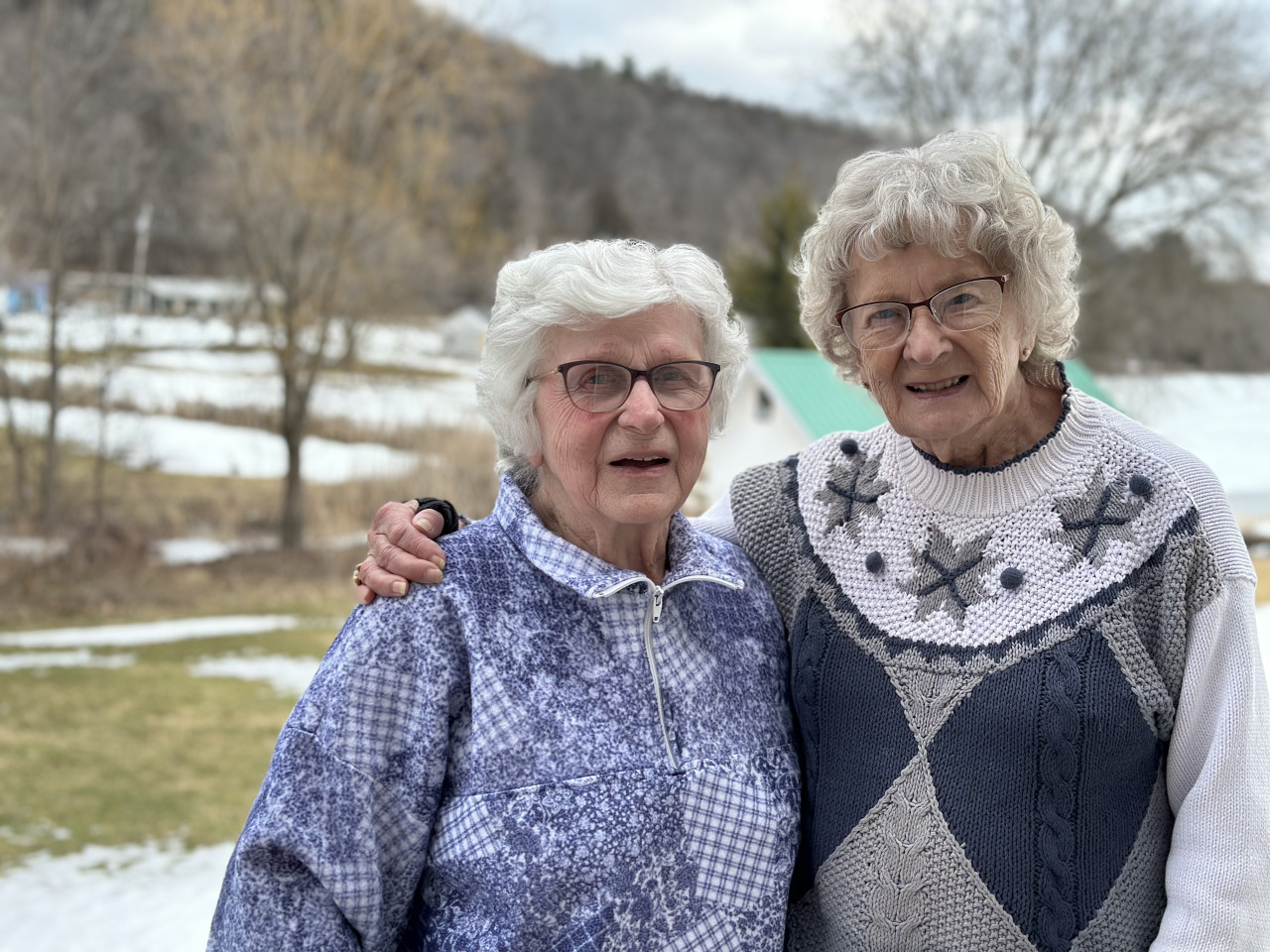To Pat Brown, Foley Mountain has always meant freedom.
Born at the base of the famous ridge in Westport, ON, the 85-year-old spent her childhood in the 1940s and 50s roaming the wild lands and open cattle pastures that overlooked Upper Rideau Lake.
Any chance she got, she'd head up the footpath in the morning and return home when the Catholic church bell rang at 6 p.m.
"I could have been anywhere up there," Brown laughed.
Sometimes she would drag her dolls up the mountain to play house on a carpet of pine needles. Other times she'd dress up and perform elaborate concerts for imaginary audiences.
"I don't know who I expected to come out of the bushes to watch," Brown smiled.
When Ruth Pedherney arrived from Ottawa as a young teenager, the girls took to exploring the mountain in more detail.
"I just loved the outdoors, I thought I'd died and gone to heaven," Ruth recalled. "When I discovered Pat lived at the bottom of the mountain, I begged her to take me up."
The mountain was much more open then, shorn clean by grazing cattle, and there was no access road leading to the shoreline or the abandoned cabin – both popular hangouts for kids at the time.
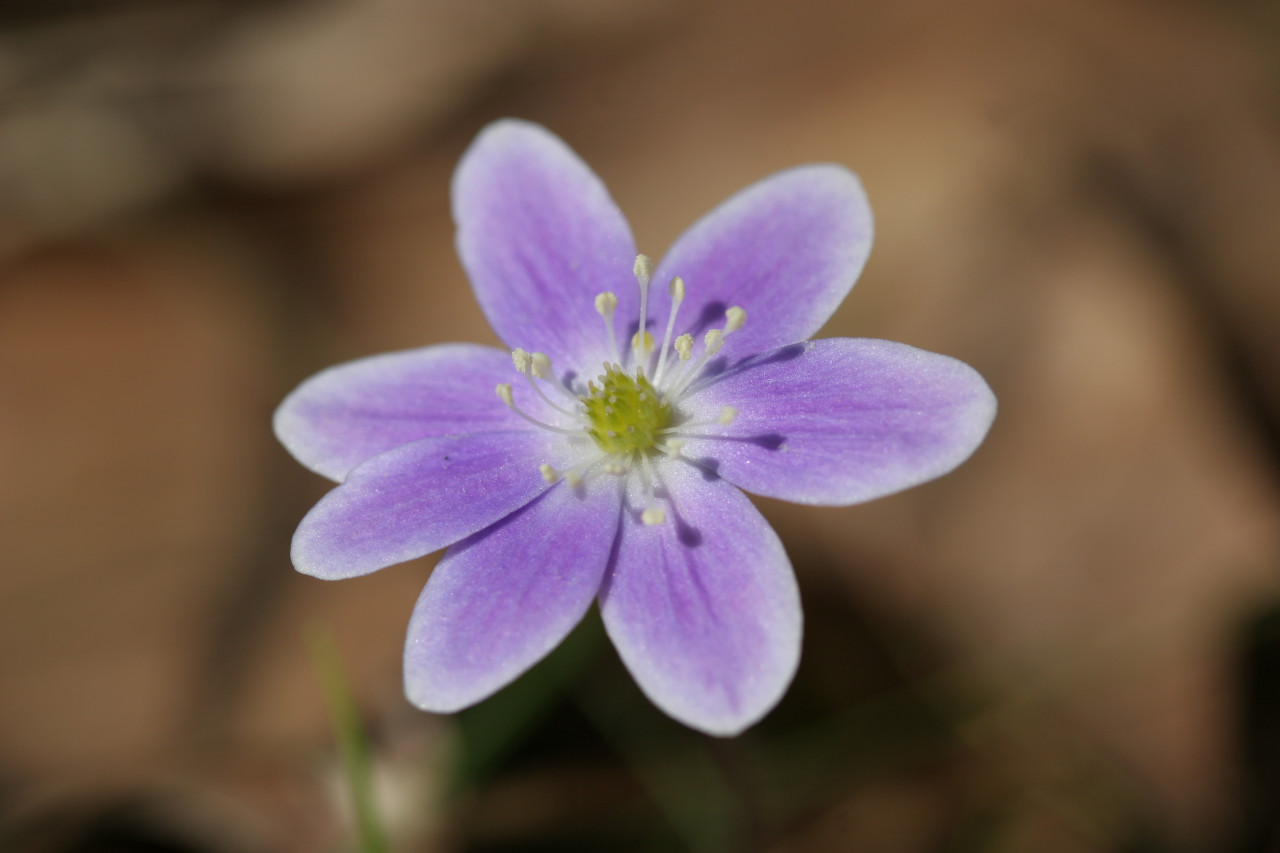 Hepatica is a beautiful spring ephemeral.Ruth and Pat would spend hours walking the ridge. They picked blackberries and raspberries, and sometimes even the mouth-puckering gooseberries. In spring they picked hepatica and spring beauty, but never the trilliums – their parents drilled that into them. Pat's brothers laid trap lines along the shoreline.
Hepatica is a beautiful spring ephemeral.Ruth and Pat would spend hours walking the ridge. They picked blackberries and raspberries, and sometimes even the mouth-puckering gooseberries. In spring they picked hepatica and spring beauty, but never the trilliums – their parents drilled that into them. Pat's brothers laid trap lines along the shoreline.
A budding biologist, Ruth would identify plants and flowers along their walks, study the insects and lichens and even take a good, close look at any scat in their path. (She later became a biology teacher.)
In winter they would ski and toboggan down the main road for days until the plough finally showed up.
"It was a wonderful place to grow up," Pat said.
The next generation roamed the ridge, too. Ruth's son Rob Pedherney, now 63, has fond memories of building forts, playing tag and passing entire days among the trees.
"One year my friends and I all got walkie-talkies for Christmas, and we were so excited," Rob said. "Five guys would run and hide and five guys would try to find them. I don't think we ever successfully found anyone, but we'd chase each other until noon and then everyone would go sit at Spy Rock and have their lunch."
In those days, Rob and his friends had a habit of climbing straight up the Spy Rock rockface – an admittedly dangerous route that is definitely no longer encouraged.
"People would be on top of the rock and then these faces would just appear over the edge," Pat laughed.
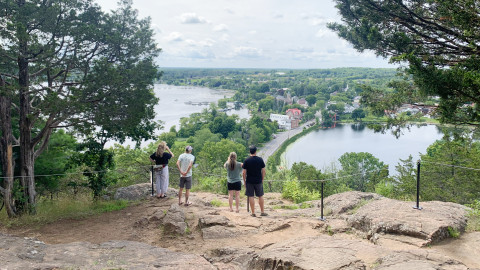 Thousands of people visit Spy Rock every year.
Thousands of people visit Spy Rock every year.A Changing Mountain
Over time, the land began to change. When the ridge's farming family, the McCanns, moved on, cattle no longer grazed the hillside, allowing brush and trees to take over. The abandoned cabin began to fall apart, eventually disappearing altogether in the 1960s (a piece of it may or may not survive in Ruth's basement).
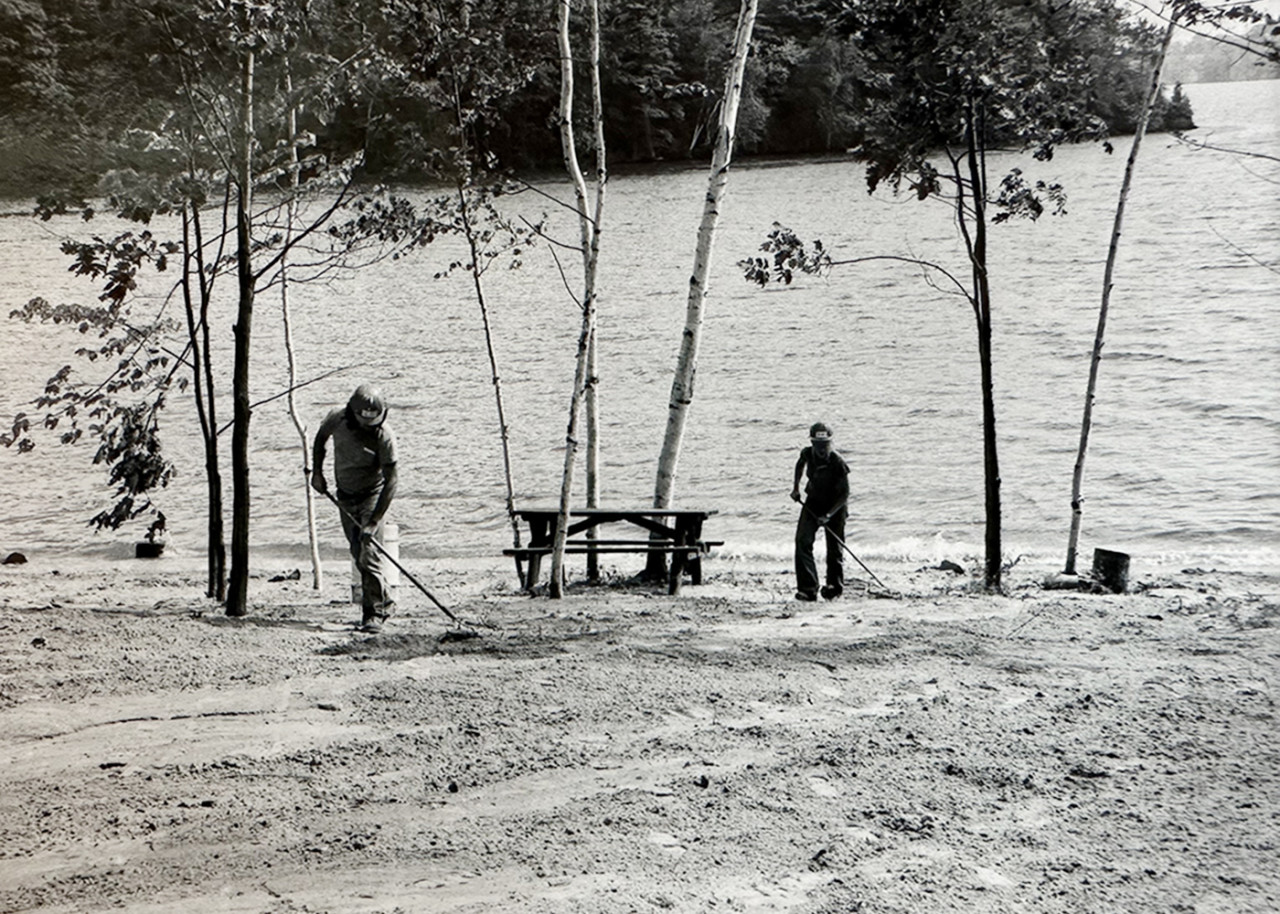 Work crews develop Foley Mountain's swimming area ahead of its official opening.As the mountain began to rewild, it became even more rugged and raw. And then in 1970, Harold Foley sold the land his family had owned for more than 100 years to the Rideau Valley Conservation Authority to become a public conservation area.
Work crews develop Foley Mountain's swimming area ahead of its official opening.As the mountain began to rewild, it became even more rugged and raw. And then in 1970, Harold Foley sold the land his family had owned for more than 100 years to the Rideau Valley Conservation Authority to become a public conservation area.
Roads were built, trails were blazed and an interpretive centre was built near the site of the abandoned cabin.
Foley Mountain Conservation Area officially opened in 1973; Rob was part of the first crew to develop the amenities.
He worked directly for Barry McQuay, Foley Mountain's first site supervisor who had taken up residence in the McCann farmhouse. He said McQuay was determined to protect the property's flora and fauna like never before.
"We nicknamed Barry the white knight," Rob laughed. "He drove this little Datsun and he was going to save the world. He was the right guy to have for the park, that's for sure. If he wasn't there, Foley Mountain wouldn't be what it is today."
Under McQuay's watch, grey rat snakes were fiercely protected. Ruth recalled a large grey rat snake once slithering out of the Interpretive Centre's chimney during a Friends of Foley Mountain meeting, and Barry simply donned some gloves and gently carried it outside. Staff were instructed to stop for any snakes they encountered on their rounds – groundbreaking stuff for the time.
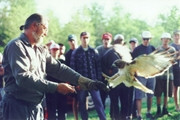 Barry McQuay introduces his semi-tame hawk, Merak, to a visiting group.Litter and vandalism were also not tolerated. Rob recalled having to scrub orange spray paint from hundreds of rocks across the park after an orienteering club marked all their spots, sparking outrage from McQuay.
Barry McQuay introduces his semi-tame hawk, Merak, to a visiting group.Litter and vandalism were also not tolerated. Rob recalled having to scrub orange spray paint from hundreds of rocks across the park after an orienteering club marked all their spots, sparking outrage from McQuay.
"They needed someone like that at the park," Rob said.
As the forest flourished, wildlife began to return. Today, it's an oasis for hundreds of resident and migratory species, including several species at risk.
"The mink are back, the beavers are back, the deer are back, the coyotes are back, the bears are back, the moose are even back," said Rob. "The animals have exploded all around. And good for them."
Ruth agreed – with only a hint of chagrin.
"I remember years ago, if you saw a deer, you would tell the world that you saw a deer. Now you can count 25 on that pond going across in the winter at any time," she said.
Befriending Foley Mountain
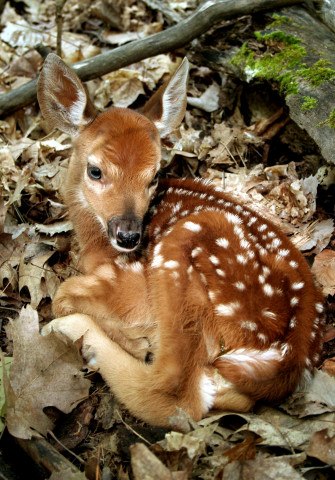 A white tailed deer fawnWhile Pat, Ruth and Rob have all left and returned to Westport at various times throughout their lives, they've each stayed involved in Foley Mountain's development.
A white tailed deer fawnWhile Pat, Ruth and Rob have all left and returned to Westport at various times throughout their lives, they've each stayed involved in Foley Mountain's development.
Pat and Ruth were both heavily involved in the Friends of Foley Mountain charitable group in the late 1990s and early 2000s, when conservation authorities faced deep cuts to their provincial funding.
The women helped fundraise for safer infrastructure at Spy Rock, and helped develop the popular program that grants an annual parking pass to anyone who donates $50 to the Friends.
They also supported the creation of Foley's outdoor education hub, fundraising to move the heritage Silversides barn to Foley from Perth Wildlife Reserve and adding bathrooms and solar panels.
"The programs they run for the kids are really wonderful," said Ruth.
Rob, for his part, has helped continue the Spy Rock Christmas star tradition which began in the late 1980s. Each year he helps hang the lights each year in memory of late hotel owner Dick Ready, which can be seen across the village.
All three agree the park has played a formative role in their lives – and that it has become an invaluable resource for Westport and surrounding areas.
"Westport is a big park with a little village in the middle of it," Rob said. These days, only one thing really bothers him about Foley Mountain Conservation Area.
"How the heck did it come to be called a mountain?"
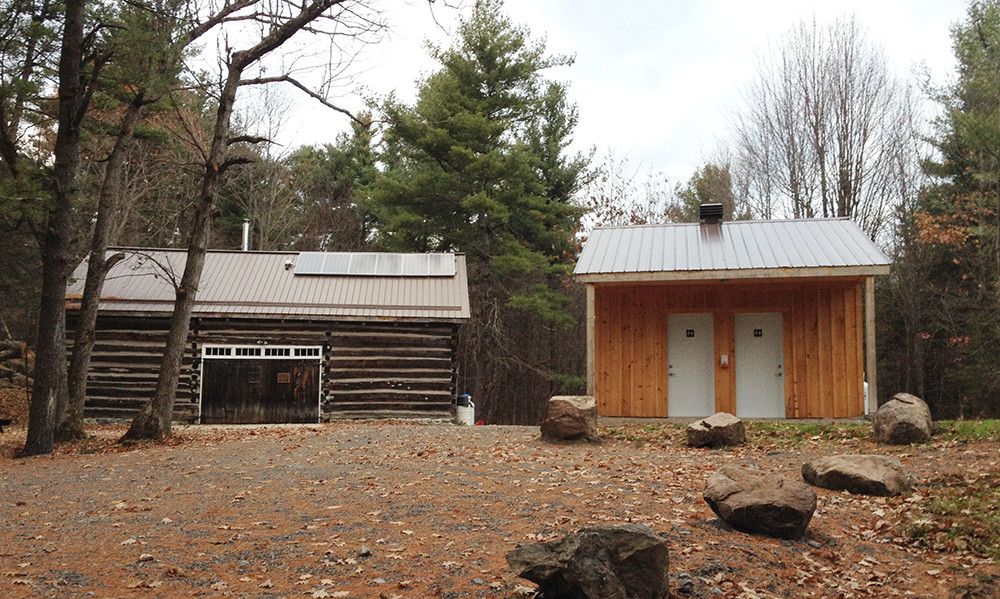 Silversides barn and its washrooms have extended the outdoor education season at Foley Mountain.
Silversides barn and its washrooms have extended the outdoor education season at Foley Mountain.

